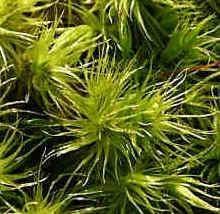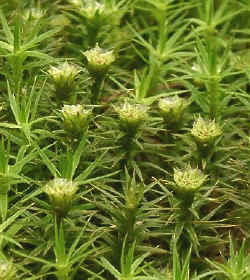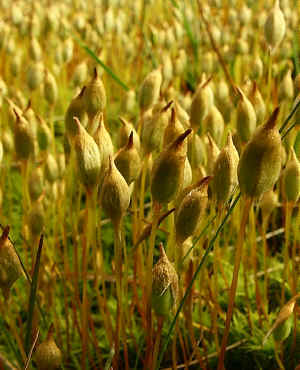|
| |
Miraculous Mosses

| Mosses are an amazingly
resilient and versatile group of plants. They range from microscopic discolourations on
the soil to great shaggy knee-high carpets. They can be found in just about every habitat
you can think of, from deserts to streams and from the Arctic to the Antarctic. Masters of suspended
animation, you can dry them out completely, subject them to heats of 70 0C (twice as hot as
our recent summer heat wave) and on applying water, they will spring back into vibrant
life again. (Dried museum specimens, have on occasion, been brought back to life after
many years storage, by the simple application of a few drops of water.)
Mosses will grow in deep, dense
forests and caves, in light intensities too low for any other green plants to survive. In
places like the high Arctic, they are one of the few plant forms that can survive the
devastating coldness. Miraculous indeed!
Together with the related
liverworts, mosses make up a group of plants known collectively as ‘Bryophytes’.
This is a group of non-flowering plants which are considered to be fairly simple in
evolutionary terms. Compared to Flowering Plants, such as daisies or dandelions, they have
a much less organised structure. They have no true roots and the leaves are only a few
cells thick.

|
Moss reproduction also demonstrates relatively simple characteristics.
Their sex life is out in the open rather than hidden from view within flowers.
Antherozoids (sperm equivalent) are produced in tiny sacs, called antheridia. On their
release from the antheridia, the antherozoids must then swim through surface water to
fertilize neighbouring egg cells. These are produced in the base of flask-shaped
structures embedded in the moss tissue. This absolute requirement for the presence of a
surface water film for successful reproduction, ties mosses to habitats where wet
conditions occur at least occasionally. Although mosses do not produce flowers, in some species, shoots carrying
male reproductive organs (antheridia) can look just like small green flower heads (left). |
|
. |

|
Fertilization
of an egg cell results in the development of a new, asexual stage in the moss life cycle.
This is the sporophyte, consisting solely of a stalked capsule, whose base remains
embedded in the parent moss tissue. Sporophytes are mostly non-photosynthetic and remain
reliant on the parent plant for nutrients and water. At certain times of year, most moss species produce
large numbers of these capsules, springing up in profusion from the moss carpet like
minute forest towers. |
|
. |

|
Spores
are produced within the uplifted capsules and then shed, often using ingenious dispersion
methods. The capsule (left) sheds
spores a bit like a pepperpot. It has a peristome with radial teeth which swell or
contract depending on the amount of moisture in the air. This has the effect of closing or
opening the centre of the peristome. When the peristome teeth contract, opening up a gap, the wind can shake the
spores out of the capsule.
When the spores reach a suitable habitat
and germinate, each will eventually produce a new moss plant. |
*Thanks to Dr Sean Edwards,
Keeper of Botany at the Manchester Museum, for kindly supplying some identifications and
common names of the mosses pictured above.
The names of the
mosses illustrated are included in the image titles. (These titles become visible when you
hold your mouse pointer over the image.)
|
|



